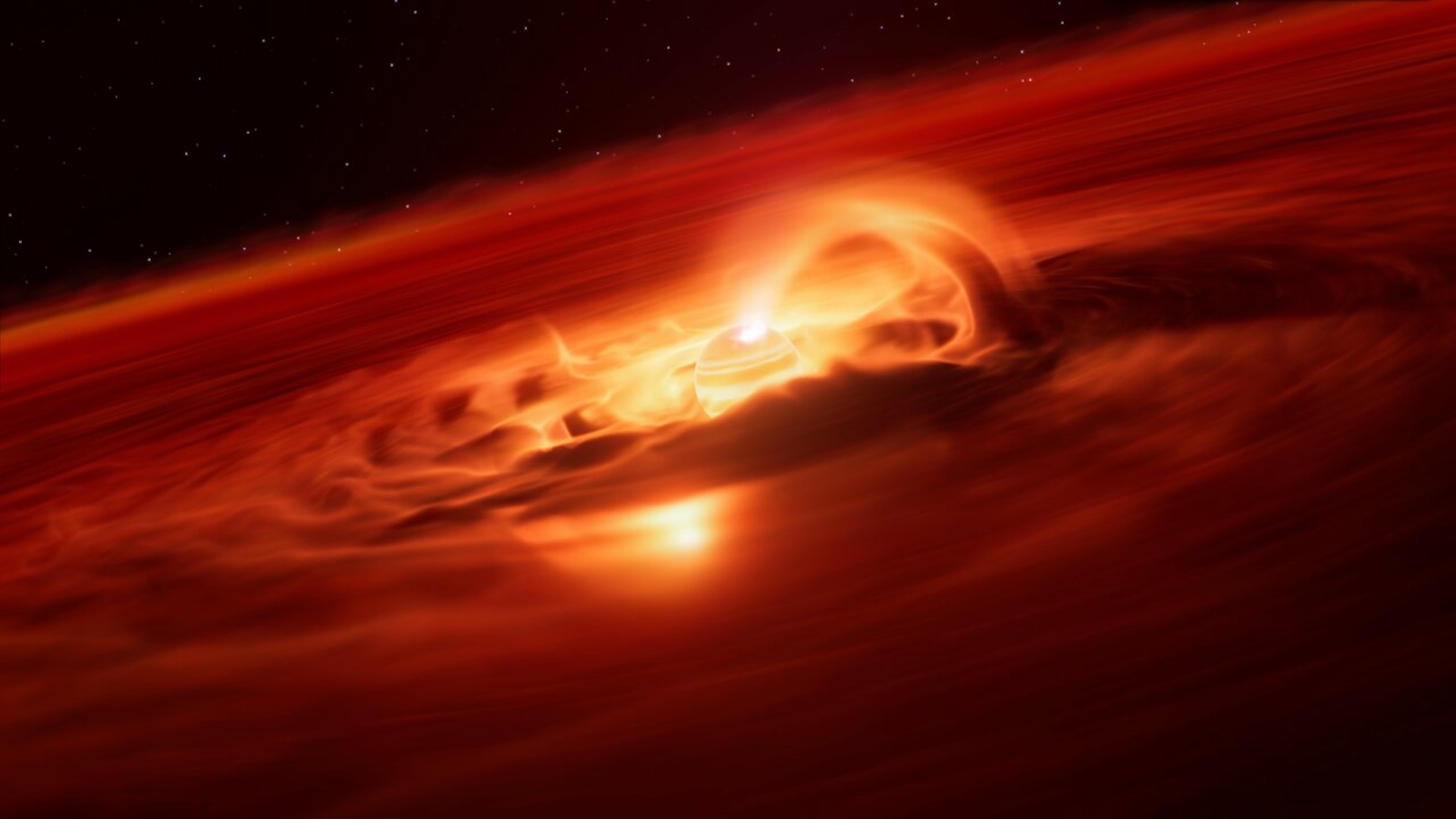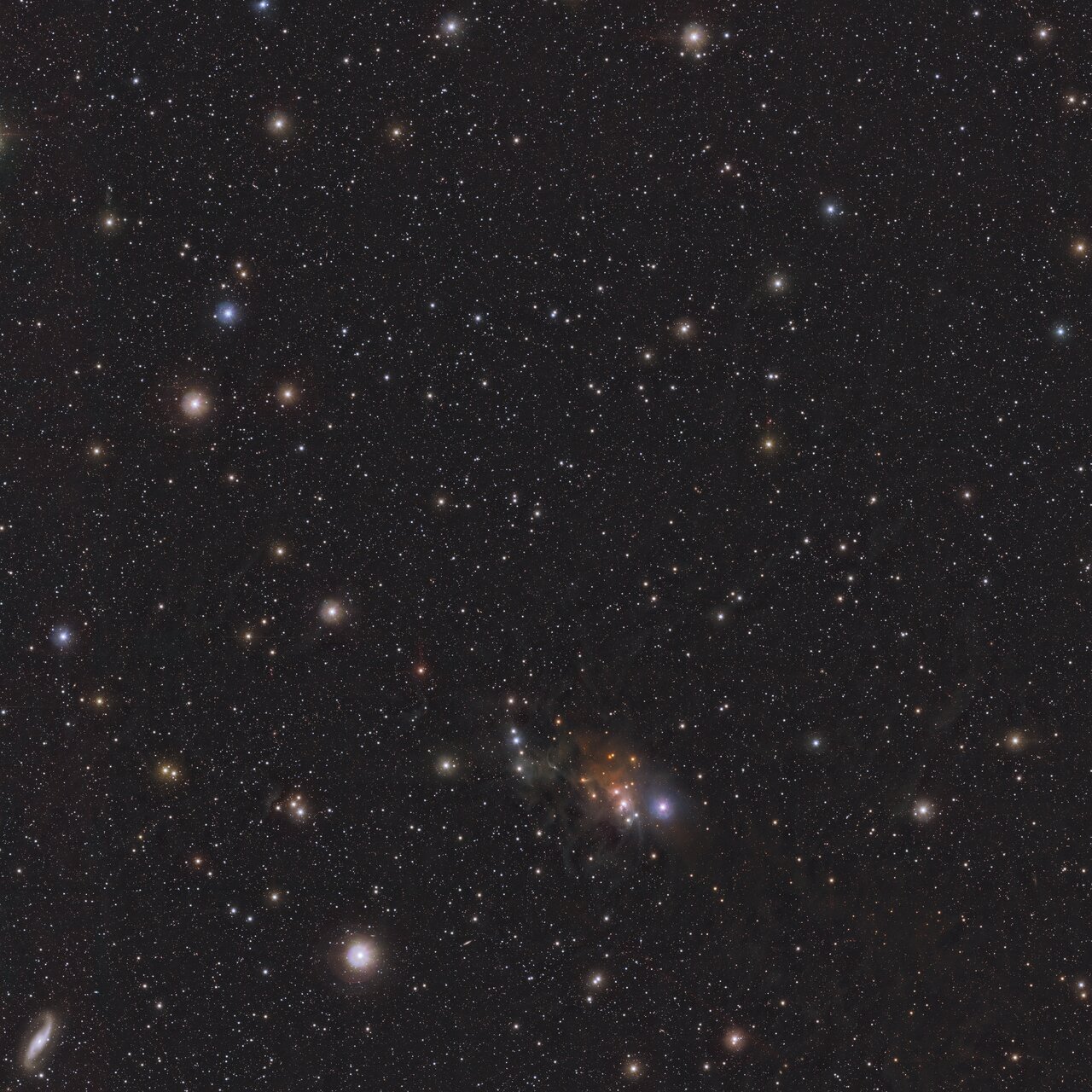Astronomers discover bizarre 'runaway' planet that's acting like a star, eating 6 billion tons per second
The James Webb and Very Large telescopes spotted a free-floating planet accreting material at a record rate, displaying behavior similar to how stars form. Scientists aren't clear as to why.

Astronomers have spotted a "rogue" planet gobbling gas and dust at a record rate, and they can't explain its baffling behavior.
Although many rogue planets, which float freely through space without orbiting a star, have been discovered before, this one — known as Cha 1107-7626 — appears to be the fastest-growing free-floating planet ever discovered, gorging at a peak rate of 6.6 billion tons (6 billion metric tons) of matter per second, according to observations with the European Southern Observatory's Very Large Telescope (VLT) in Chile and the James Webb Space Telescope (JWST).
The exoplanet's rapid growth spurt may help scientists learn more about the difference between large planets and small stars, the team reported Oct. 2 in The Astrophysical Journal Letters.
"Our main motivation to study this kind of object is to understand whether these objects are former planets that have been ejected from their planetary system, or they have formed 'isolated' from the gravitational collapse of molecular cloud material, like stars," lead study author Víctor Almendros-Abad, an astronomer at the Palermo Astronomical Observatory in Italy, told Live Science in an email.
The team spotted an "accretion burst," which happens when a planet suddenly pulls in a lot of material from its surrounding disk of gas and dust. Cha 1107-7626 is always accreting from this source material, but the study shows that the accretion rate is not steady. In fact, in August 2025, the planet was accreting eight times faster than it was a few months before.
Accretion bursts suggest that rogue worlds may be like young stars, since these sudden bursts of eating have been observed in stars. But because rogue planets are so much smaller than stars, it's unclear where their formation pathways diverge.
"Accretion bursts have been known for quite some time; the first was discovered in the late 1930s, long before it was clear what we are witnessing," study co-author Alexander Scholz, a professor of astrophysics at the University of St. Andrews in Scotland, told Live Science in an email. "Such events are now understood to play an important role in the assembly of stars. They also shape the environment in which planetary systems form, by heating the gas and dust nebula surrounding young stars.
Get the world’s most fascinating discoveries delivered straight to your inbox.

"The relics of such bursts may be seen in the chemistry of meteorites in our own solar system," Scholz continued. "It is not clear if bursts happen to all young stars, and what triggers them. The discovery of a similar event in a planetary-mass object may be a clue that there is a universal mechanism behind accretion bursts. In this sense, our discovery will have a much wider impact."
Scientists have spotted more rogue planets in recent years, including a notable haul by JWST that discovered more than 500 of these worlds in a trapezoid-shaped spot within the Orion Nebula, a vast gas cloud noted for its star births.
Rogue planets remain hard to find, however, as they glow in infrared light (radiant energy) best visible in large telescopes such as JWST and VLT, Almendros-Abad said. The scientists hope VLT and JWST can look at more of these rogue planets, to learn whether they form like stars or planets. Almendros-Abad noted that the accretion parallels between stars and planets are not fully understood.
"One of the next steps is to understand how common these types of events are in 'rogue planets,'" he said. "This will tell us how important [accretion events] are in their evolution."

Elizabeth Howell was staff reporter at Space.com between 2022 and 2024 and a regular contributor to Live Science and Space.com between 2012 and 2022. Elizabeth's reporting includes multiple exclusives with the White House, speaking several times with the International Space Station, witnessing five human spaceflight launches on two continents, flying parabolic, working inside a spacesuit, and participating in a simulated Mars mission. Her latest book, "Why Am I Taller?" (ECW Press, 2022) is co-written with astronaut Dave Williams.
You must confirm your public display name before commenting
Please logout and then login again, you will then be prompted to enter your display name.


